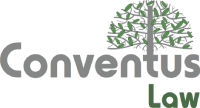The energy codes are getting stricter and stricter on either side of the 49th parallel, but builders still require parts that do not come late and do not fail inspection at the first instance. There is a good chance that a sash that passes the Canadian regulations will also pass through the American inspections without going through an additional lab trial and a ton of paper work. With this information, attorneys, compliance leads, and those in purchasing teams will be able to reduce red tape well before the truck reaches the port because of knowing where the two rulebooks coincide and where they are not.
Two Regulatory Regimes, One Supply Chain
Canada’s Natural Resources Canada (NRCan) Energy Efficiency Regulations, now at Amendment 17, treat windows and doors as energy products. The rule sets a national U-factor ceiling of 1.22 W/m²·K and requires testing under CSA A440.2. South of the border, U.S. Department of Energy rule 10 CFR § 430 lists windows as “consumer products” with zone-by-zone U-factor and solar heat-gain coefficient (SHGC) targets, referencing NFRC 100 and 200 test methods. The paperwork differs—NRCan needs an Energy Efficiency Report, the DOE demands a Compliance Certification Management System (CCMS) filing—but the glass, spacer, and frame often come off the same production line.
The Compliance Shortcut: Selling Products Already Approved for Canada
Dealers sourcing through buildmart windows and doors ottawa often leverage factory models that already carry Canadian U-factor and SHGC labels, trimming weeks off a U.S. certification cycle. Because NRCan accepts only third-party test reports, the same data package slides neatly into the DOE’s CCMS portal. Importers then add a U.S. zone map sticker and ship, avoiding a second thermal simulation and its four-figure fee. Legal teams appreciate the paper trail; ops teams like the shorter lead time.
Technical Equivalence and Gaps: Where Canadian Specs Exceed U.S. Minimums
- Lower U-factor cap — NRCan’s 1.22 W/m²·K threshold converts to roughly 0.21 Btu/h·ft²·°F, tighter than the warm-state U.S. limit of 0.30.
- Stricter air-leakage test — CSA A440.2 measures at 75 Pa; NFRC checks at 50 Pa, allowing more infiltration.
- Spacer chemistry — Canadian rules favor warm-edge polymer spacers; aluminum spacers still pass in many U.S. zones.
- Recycled frame content — Amendment 17 encourages minimum post-consumer PVC content, a metric the DOE has yet to address.
Legal Benefits of Dual-Rated Inventory
Stocking a window that already meets Canada’s tougher numbers does more than simplify testing. It helps tariff planning: customs brokers can classify the product under HS code 7610.10.00 (“aluminum doors, windows and their frames”), then attach the existing NRCan report as technical proof if Customs and Border Protection questions the product value.
Dual labels also smooth Energy Star Version 7.0 marketing because the Canadian sticker carries the same NFRC ratings the U.S. program uses. Finally, having one data set for two countries cuts the odds of a false-advertising claim under the FTC Green Guides. The numbers on the box match the numbers in both federal databases, so competitors have less room to allege inflated performance.
Import Checklist for Counsel and Compliance Leads
- Pull the NRCan model number and verify its “active” status in the public database.
- Download the third-party test report and upload it to the DOE CCMS under the matching model code.
- Add the correct HS code and energy-efficiency program tag to the Customs PGA message set before the shipment reaches the border.
- Print bilingual (English/French) labels showing U-factor and SHGC; keep image files on record for five years.
- Schedule one random lot test per quarter with an NFRC-accredited lab to prove ongoing conformity.
- Archive all correspondence—lab reports, CCMS receipts, broker filings—in a single folder so both Canadian and U.S. inspectors can trace the path from factory floor to retail shelf.
Builders want parts that clear code review the first time, and legal teams want paperwork that stands up to an audit. Products certified for Canada already sit a step above many U.S. minimums, which makes them low-risk imports when time and compliance budgets run tight. By pairing a Canadian test report with the DOE’s digital filing system and a thorough import checklist, distributors move freight faster, contractors hit energy targets without costly redesigns, and counsel sleeps easier knowing every pane of glass is backed by two governments’ data, not guesswork.
Final sentence
Choosing windows and doors already cleared for Canada lets importers glide through U.S. energy rules, bypass duplicate lab work, and keep tariff paperwork tidy. A single test report feeds two government databases, Energy Star labels stay accurate on both sides of the border, and legal teams gain a ready defense against compliance challenges. In a market where shipment delays pinch margins, dual-rated inventory turns regulation from a roadblock into a built-in quality stamp that speeds product to site.





